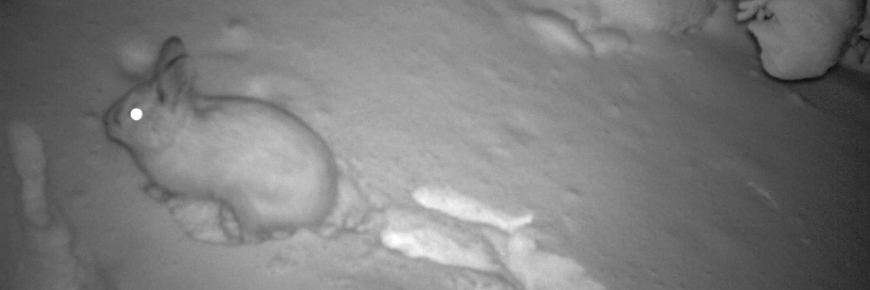
Snowshoe hare (Lepus americanus)
Pukaskwa National Park
The snowshoe hare is a small hare distinguished by its large hind feet and black-tipped ears that are relatively small for a hare. The snowshoe hare sheds completely twice a year, changing its coat to dark brown in the spring and to white in the fall. It eats succulent vegetation in the summer and in the winter it eats twigs, buds, and bark. The female can bear 2 to 3 litters of 2 to 4 young each year between April and August. Few hares live more than 3 years in the wild.
Snowshoe hares are extremely important to the ecosystem in that they are food for many other animals, including wolves, coyotes, foxes, hawks and owls, and the main prey of lynx.
Snowshoe hare populations exhibit a cycle, usually spanning about 11 years, in which their numbers gradually increase until their population is very dense. The cycle then crashes suddenly.
The effects of the snowshoe hare cycle are felt throughout the entire ecosystem. For example, when there are few hares to eat, predators turn to other sources of food, which means other animals get preyed upon more often.
Snowshoe hare status in Pukaskwa
Snowshoe hare are a common species of the boreal forest in North America. Visitors can often view this species when hiking or camping at the park.
- Date modified :